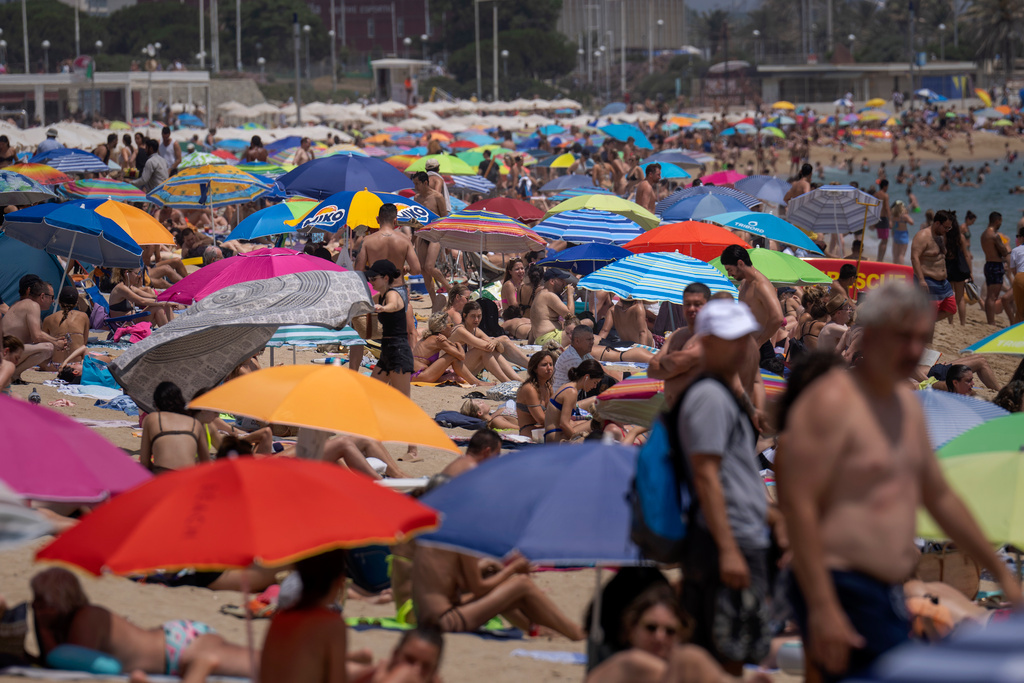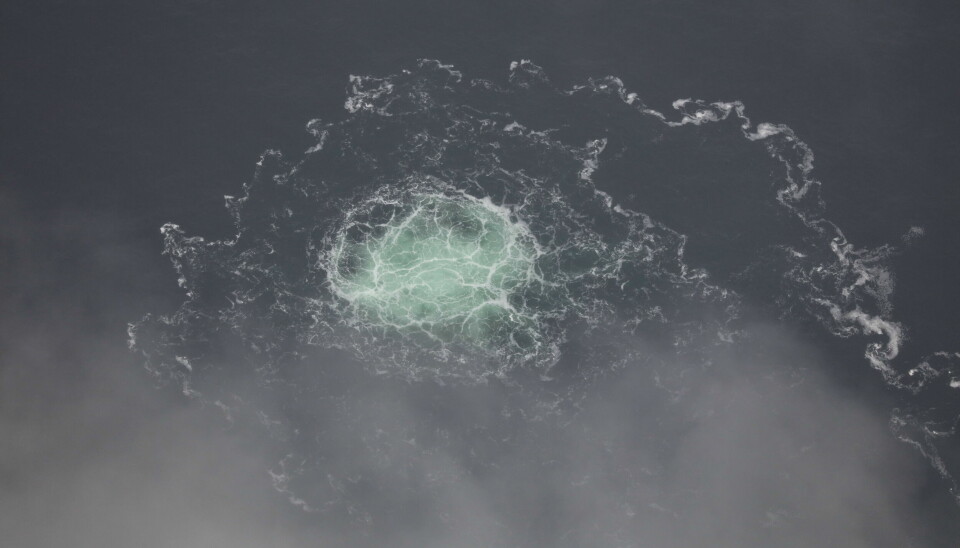Problematic to depict the heat with play
Harvests are drying up. Water is rationed. People die because of the heat. But in European media, it is not uncommon for heat waves to be imaged with images of cloudless skies, overcrowded beaches and splashing children. “It’s problematic,” says researcher Saffron O’Neill.
Harvest work was stopped after arable land was ravaged by fire. Architects warned that fire-ravaged Notre Dame would collapse from the heat. And about 2,500 people are estimated to have died when parts of Europe were paralyzed by two heat waves in the summer of 2019.
But anyone who opened a newspaper or clicked on a news article to read about the devastating heat may have been met with a completely different image – of people who carelessly played and enjoyed the scorching sun, often in or near water.
– That type of image can make us think that heat waves are just something positive and enjoyable and nothing we have to adapt to. But there are people who suffer greatly, says Saffron O’Neill, a researcher at the University of Exeter in the UK, to TT.
Splash and play
O’Neill and her colleagues have investigated how news media in the UK, the Netherlands, France and Germany chose images in the reporting on the heat waves in 2019. The studywhich has not yet been reviewed by other researchers for publication in a scientific journal, points to some clear themes.
One is that a majority of the pictures tended to depict heat waves as something fun and positive, often with people who seem to be fine in or near fountains, swimming pools or on the beach.

Crowded on the beach in Barcelona, Spain when the unusually early heat wave hit recently. But for vulnerable groups such as the elderly, younger and people with other diseases, the high temperatures can be a risk rather than a pleasure. Photo: Emilio Morenatti / AP / TT
The second is that once the images were considered to make a connection to the risks, people were rarely shown, but rather a thermometer against a dazzling sun or an angry red heat map. If a person was present, he or she was often anonymous, often photographed in silhouette against the sky.
– Admittedly, those images presented heat waves as something disturbing. But they were largely depersonalized, as if people were neither part of the problem nor the solution.
Clear dissonance
The study only includes articles that mention both “heat wave” and “climate change”. In this way, the researchers wanted to find relevant texts that could be assumed to make some connection to the increased risk of longer, more frequent and intense heat waves as a result of climate change – and the risks it entails.
Therefore, O’Neill was surprised that in many cases there was a clear dissonance between the content of the text and the choice of illustration. Headlines and captions could tell of never-before-seen temperatures or affected people while the images were still of a holiday-like and carefree nature.
– Some newspapers could even write about deaths linked to the heat next to a picture of a man splashing in a fountain.
What do you think the gap between text and image is due to?
– In part, I think it is an attitude that is deeply rooted in the soul of the people, especially in countries in northern Europe. Here, sunny summer weather is something we long for and which is generally perceived as something positive due to our historically mild climate, says O’Neill.
– In part, it may be because the reporter and photo editor do not always have time to talk to each other. When it is stressful, it can be easy to ask a photographer to take a picture of the first thing that comes to mind and is associated with a heat wave, which can be the beach.

A jogger at sunrise in Frankfurt, Germany on June 17. The red color signals that the heat can be risky, but the person in the picture is anonymous and faceless. Photo: Michael Probst / AP / TT
O´Neill emphasizes that the study is not about hanging out the media and calling for a ban on pictures of swimming. But she believes that an abundance of such illustrations – especially news of risks associated with heat waves – misses important parts of the story, especially as the extreme heat can be deadly for vulnerable groups.
Central roll
It is said that a picture says more than a thousand words. They can make news penetrate the noise and into people’s minds – many can still see the smoking twin towers in Manhattan or the napalm-burnt girl fleeing bombs in Vietnam in front of them.
These types of strong images become part of our collective memory, and O’Neill believes that images depicting the effects of climate change can have the same power to influence.
– Images play a central role in how we perceive and think about climate change. They tell us what is important, she says.
– I think we need more pictures that depict people who are vulnerable to the effects of heat waves. In addition, there are often no images that show a hopeful future through measures we can take to adapt, such as green architecture that can mitigate the heat effect in the gray concrete.
Facts: Hot summers in Europe
Heat waves have become more common in Europe. Here are three examples.
2021: Last summer was the warmest that has been experienced in Europe, according to the EU’s climate change service Copernicus.
In late July and early August, Greece was plagued by what Prime Minister Kyriakos Mitsotaki described as the worst heat wave in more than 30 years, with temperatures above 45 degrees in some regions. In parts of southern Spain the temperature reached 47 degrees.
The heat and drought triggered extensive forest and land fires along the Mediterranean, from Turkey and Greece to Italy and Spain.
2019: Europe was hit by two heat waves, in late June and mid-July. The heat is linked to about 2,500 deaths, according to the Center for Research on the Epidemiology of Disasters in Belgium.
In France, a temperature record of 46 degrees was recorded in the city of Verargues. Thousands of schools were closed. On July 24 and 25, record heat prevailed in northern Europe, with temperatures of 42.6 degrees in Lingen, Germany, 41.8 degrees in Begijnendijk, Belgium and 38.7 degrees in Cambridge, England.
2003: Great Britain, France, Italy, Spain and Portugal experienced exceptional heat during the first half of August. In Portugal, a record high of 47.3 degrees was recorded in Amareleja in the south.
An EU study of 16 countries shows that the heat wave led to 70,000 deaths, mainly among the elderly. According to various reports, France and Italy recorded between 15,000 and 20,000 deaths each.
Source: AFP



